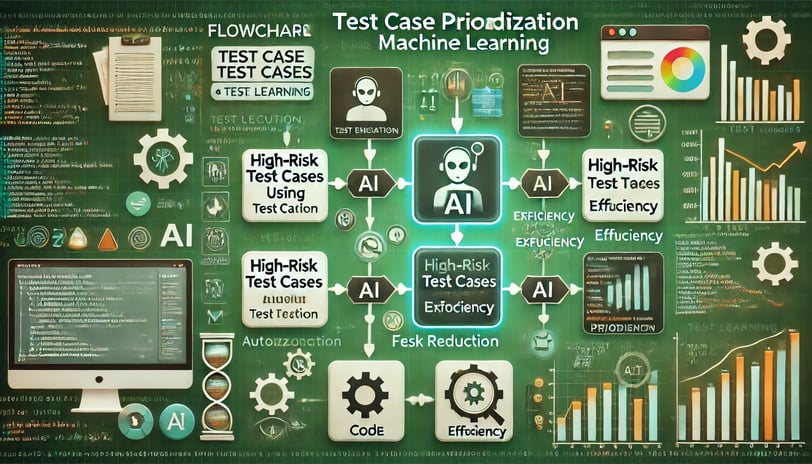Test Case Prioritization with Machine Learning
How to streamline your software testing process with AI
3 min read


As applications evolve and become more complex, software testing faces a critical challenge: how to efficiently run a growing number of test cases. Running all tests with every new build can be time-consuming, inefficient, and costly. This is where test case prioritization comes into play. Prioritizing test cases ensures that the most critical and high-risk areas of the application are tested first, optimizing time and resources while maintaining quality.
The Problem: The Growing Complexity of Applications
In the software development lifecycle, the number of test cases tends to increase with each new feature, bug fix, or modification. As applications expand, running the entire suite of test cases becomes unsustainable. This can lead to several issues:
Increased Test Execution Time: Testing every part of the application in every build is inefficient and delays releases.
Resource Strain: More tests mean more infrastructure is needed to run them, leading to higher costs.
Risk of Missing Critical Bugs: With too many test cases, there is a risk that important test cases might be overlooked or run too late in the process.
To address these issues, prioritizing test cases is essential to ensure that the most critical aspects of the software are tested first. However, determining which test cases to prioritize manually can be a complex and error-prone task.
The AI Solution: Machine Learning for Test Case Prioritization
Machine learning (ML) models offer a powerful solution for test case prioritization. By analyzing historical test data, such as past bugs, test execution times, and code changes, ML models can predict which areas of the code are most likely to fail and need attention. Here’s how machine learning helps optimize the testing process:
Data-Driven Insights:
ML models can analyze historical test data and identify patterns in defect-prone areas. For example, if a certain feature frequently fails after updates, the model will prioritize test cases related to that feature.
Test Case Prioritization:
Based on these insights, ML models can rank test cases according to their risk. High-risk test cases are run first, ensuring that the most likely bugs are caught early in the development cycle.
Reduced Test Suite Size:
Instead of running the entire suite, machine learning selects only the most relevant test cases. This reduces the number of tests that need to be executed while still covering critical areas, improving efficiency without sacrificing quality.
Faster Feedback Loops:
By focusing on high-risk areas, machine learning speeds up the testing process, providing quicker feedback to developers and allowing teams to address bugs earlier.
Continuous Learning:
Machine learning models continuously learn from new data, making them increasingly accurate over time. With each new build, the model becomes better at predicting which tests are most important, optimizing the process further.
Benefits of Test Case Prioritization with Machine Learning
Improved Efficiency: By prioritizing test cases that are most likely to fail, machine learning reduces the time spent on testing without compromising coverage.
Cost Reduction: With fewer tests to run, companies can save on infrastructure and resource costs.
Faster Time-to-Market: Optimizing the testing process allows for quicker builds, enabling faster releases and reducing bottlenecks.
Enhanced Risk Management: Critical areas of the application are tested first, reducing the likelihood of severe bugs making it into production.
Implementing AI-Driven Test Case Prioritization
At Digikemet, we help companies leverage machine learning to optimize their testing strategies. By integrating AI into the test automation process, we can reduce testing times, improve quality, and ensure that your software is delivered on time without compromising on performance.
Our approach involves:
Data Collection: We analyze historical test results, code changes, and defect data.
Model Training: Our machine learning models are trained to predict high-risk areas and prioritize relevant test cases.
Integration: We seamlessly integrate the prioritization models into your CI/CD pipeline, ensuring continuous optimization.
Conclusion
By implementing AI-driven test case prioritization, you can transform your testing processes and accelerate your software development lifecycle.
